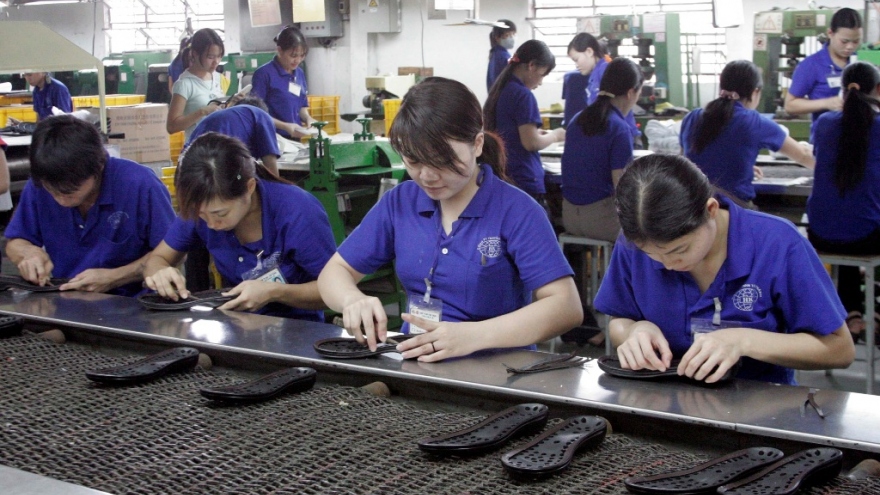Spurred on by AEC, ASEAN capital flirts with Vietnam
Capital movements across the Southeast Asian region have begun to take shape, evidenced by the growing interest in international investment.
 |
It is predicted that Vietnam may well become a net beneficiary of such capital inflows in the years to come.
To demonstrate the less-restricted capital flows currently streaming through the region following the establishment of the ASEAN Economic Community (AEC) in late 2015-which committed to promoting free investment flows and freer capital flows – Sumit Dutta, CEO of HSBC Indonesia, gave an example of one of the lender’s biggest clients in Indonesia.
This client visited Vietnam last year to meet with representatives from the top 10 corporates in the country.
“Our customer here in Indonesia was interested in two particular sectors, one is the consumer beverages sector and the second is the dairy sector. This particular investor already had a number of businesses in Indonesia, [and is] keen to add [these sectors] to his investment ranges,” Dutta told VIR over the phone after an HSBC regional briefing on ASEAN’s 50th anniversary.
According to Dutta, his customer was rather pleased with the prospects of Vietnam as a fast-growing ASEAN market, and client came to this decision after being guided by Dutta’s senior management team across the nation over the course of three days, meeting with representatives from the leading corporates across Vietnam.
Indonesian investors are not the only ones with a desire to enter Vietnam. Dutta mentioned others from ASEAN nations such as Thailand, Singapore, and Malaysia that are also seeking the right sectors to get involved with.
“We very often find that there are customers across all of the ASEAN region with the intentions and desires to invest outside their home domestic countries. What’s holding them back is that they don’t know enough about the countries they want to invest in,” Dutta said.
International lenders like HSBC, as Dutta stated, are thus playing their part in connecting investors from one country to another. Their expertise and long track record within ASEAN economies can provide their customers with real-life knowledge about each nation.
The investment and capital flows are there, but are they as free as they are supposed to be?
The bloc is committed to building an environment to attract businesses and investment, in which it has created the ASEAN Comprehensive Investment Agreement as an instrument to promote free and open capital mobility.
Investors within and beyond the ASEAN border are encouraged to both continue and expand their investments in the area.
According to Tony Cripps, CEO of HSBC Singapore, as one of the world’s must open economies, there seems to be no issue with capital flows in Singapore. But for ASEAN countries, there is some additional work that could be done to boost progress.
“I think the commitment is there. I guess in some ASEAN countries where there are currency restrictions, there’s probably more work to be done. But the ASEAN region as a bloc-with a total GDP of US$2.6 trillion-has made really significant progress on two free trade agreements which includes addressing those issues. There’s been a lot of progress,” Cripps said.
“And we expect-HSBC expects-that over time that won’t be an inhibition to the sort of growth rates we’re talking about for ASEAN as a whole, with a 5% growth rate. We don’t see this as a problem, but there’s a bit more work to do.”
AS a member of AEC, Winfield Wong, head of Wholesale Banking at HSBC Vietnam, sees Vietnam as a net beneficiary of the regional capital investment flow. “You can see the historic trend, given the positive factors of economic conditions and GDP growth.”
“I mean even if you’re looking at the fundamental economic members, over the next couple of years I believe Vietnam will be one of the top, if not the top, GDP growers. This means we’ll continue to offer what other ASEAN countries are unable to offer, because most of them are on a more developed path, and therefore looking at opportunities outside [their borders],” Wong told VIR.
According to HSBC Global Research’s “Vietnam at a glance” report, Vietnam’s economy grew 6.2% year-on-year in the second quarter of 2017, picking up from 5.2% in the first quarter. Headline inflation, on the other hand, continued to cool due to a drop in food and transport costs.
“I think Vietnam definitely will be a net beneficiary of capital inflows, we do expect more inflows coming in as opposed to outflows,” the report noted.


